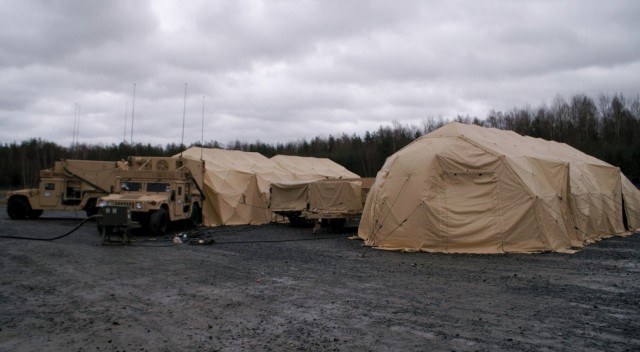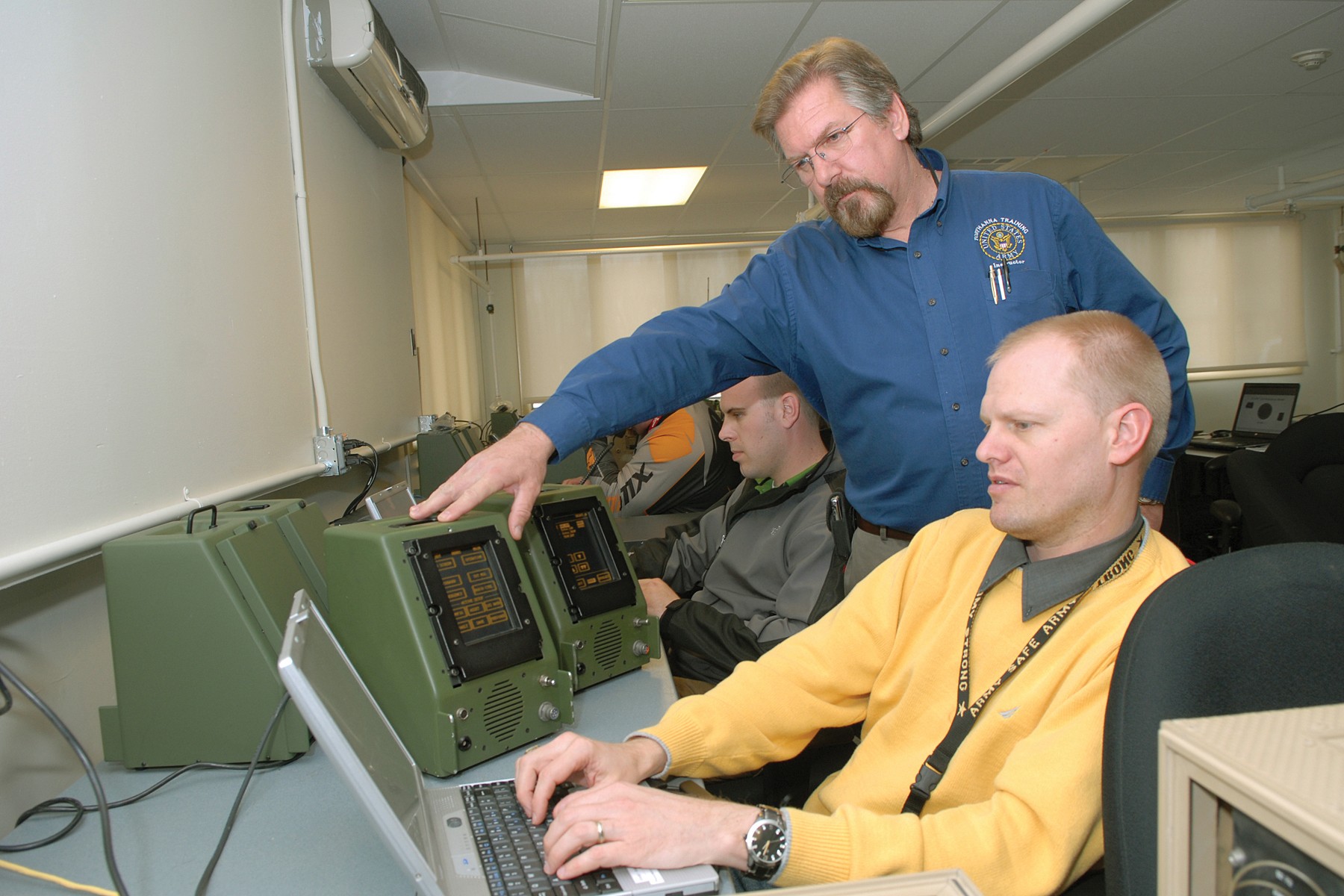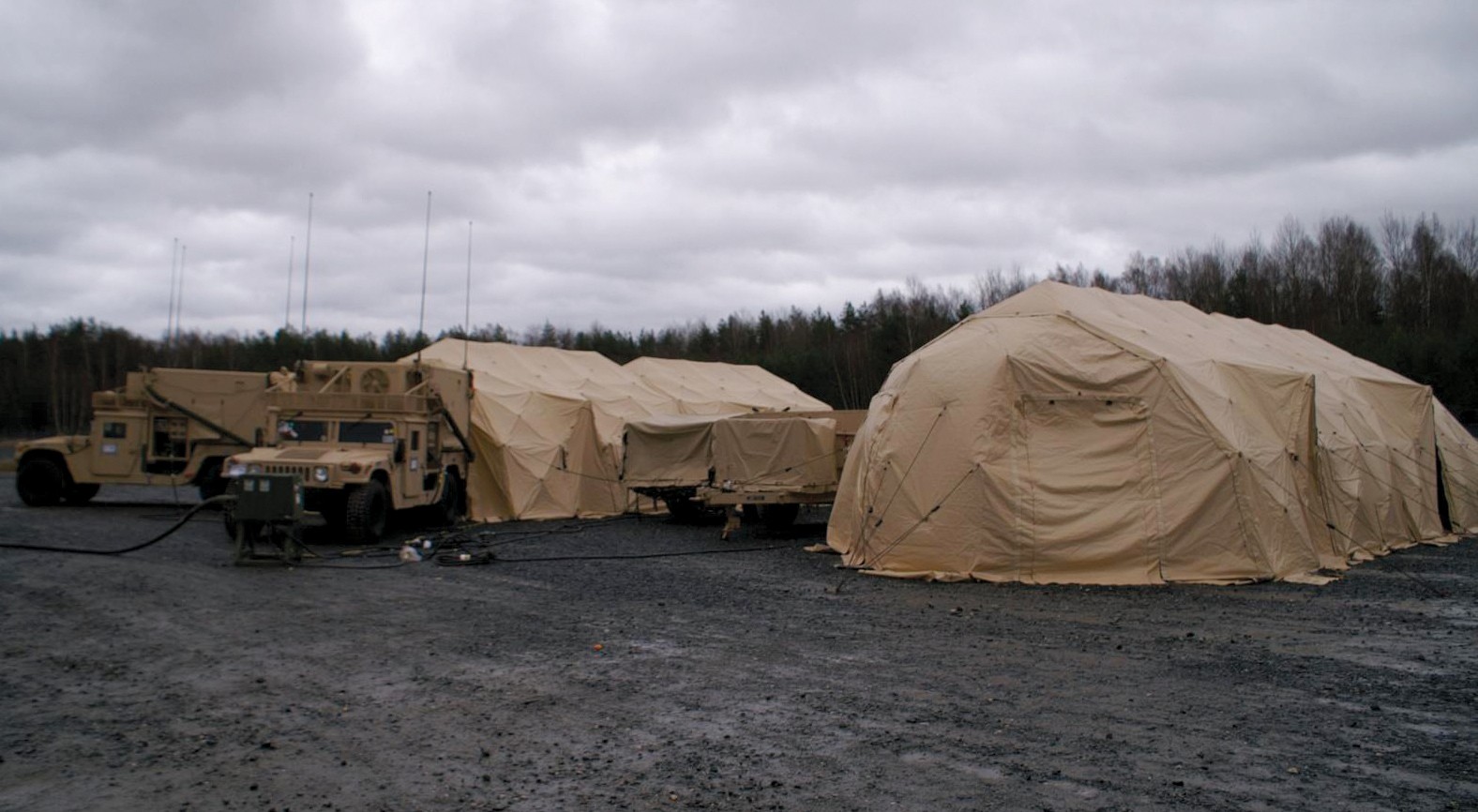TOBYHANNA ARMY DEPOT, Pa. -New field service representatives stationed around the globe learn the complexities of their job during an 18-week, in-residence training course taught at Tobyhanna.
There are seven students attending the FSR Academy to learn how to troubleshoot and fix equipment used by Soldiers in the field. The members of Class 15 are midway through a three-phase curriculum that blends hands-on training with classroom instruction. They graduate May 22.
The FSRs are gaining knowledge to help them support the Command Post Systems and Integration mission, formerly known and commonly referred to as tactical operations center. The FSR, assigned to an Army unit, deploys with the unit to ensure vital equipment is operational.
In addition to supporting automation and the radio equipment, TOC FSRs must be capable of repairing the environmental control units, auxiliary power units and generators.
"They [the students] are responsible for everything [equipment] that goes into a TOC," said Ed Sasse, training instructor, adding that their training will be used to support battlefield commanders. "They're going to have to learn how to dig into the equipment and make it work."
Sasse is one of 26 instructors who have applied years of experience and knowledge to teaching Tobyhanna's newest FSRs how to provide sustainment repair capability.
TOCs consist of an integrated group of tents and vehicles with shelters where commanders can monitor and direct the tactical operations of assigned forces in any military operation. TOCs supply the digital planning, communication and visualization tools to provide a comprehensive view of the battle space.
The FSR Academy mixes PowerPoint presentations and theory with a large amount of hands-on training using the actual assets the representatives will support. The structure of the academy is broken into three parts-administrative, phase I (networking, communications and electronics) and phase II (generators, ECUs and other mechanical systems). Phases I and II are followed by a digital exercise which requires the FSRs to use the skills and knowledge they have just learned to overcome multiple faults typical of scenarios encountered in the field. The FSRs must accomplish these tasks with as little help from the instructors as possible.
"I knew a small amount about certain tasks concerning this job," said Bruce Wilson, FSR assigned to the 2nd Brigade Combat Team, Fort Campbell, Ky. "The class has showed me how to support the unit I'm working with and has enhanced my way of thinking about the tasks I'm going to face."
Before joining the ranks of Tobyhanna FSRs, Wilson served as an Army battalion maintenance noncommissioned officer during his 25 year military career. "I was a mechanic, but worked with networking and engaged in TOC operations while on active duty," he said.
The FSR Academy is taught three to four times a year by the Business Management Directorate's New Equipment Training Division personnel. The curriculum covers topics from solder certification to fiber optic cable repair and troubleshooting, power units, and ECUs. Academy courses also include advanced, graduate-level networking for TOC programs.
"The instructors are cross-trained and multi-disciplined to support this broad-based approach to training," said Paul Baumes, NET Division chief. "They are committed and dedicated to this mission, spending 50-60 percent of their time traveling in order to maintain warfighter readiness and transformation to an agile, on the move, synchronous fighting machine." Instructors develop the course curriculum, presentations, student lesson plans and deliver the training in such a way as each course becomes the building block for the next level, he added.
Officials state training requirements are constantly evolving to support the warfighters in the field. This means that the training material itself is in a constant state of development in order to keep up with hardware and software changes to various systems that the FSRs support. New courses covering Tier II networking and communication subsystems will be introduced to future classes.
"We're the first line of defense for repairs while deployed," said Matthiew Miller, FSR assigned to the 1st Infantry Division, Fort Riley, Kansas. "I can use what I learn here to reduce equipment down time while in the field."
Miller's background includes an eight year military career in Army aviation and serving three years in Iraq as an FSR for the Blue Force Tracking program.
Miller mentioned that most of the FSRs have diversified backgrounds in fields that are affiliated with the FSR training. "There probably isn't anybody in the class that is knowledgeable about everything," he said, adding that some students will do well during the electronics portion of training while others will stand out during the mechanical portion.
"In each leg of training, the strong performers help others through the class," Miller said.
"I'm learning a lot of stuff I didn't know," Wilson said. "I'm learning about fiber optics. Soldering little circuit boards was something new for me. They are so small you have to use a microscope or magnifying glass to work on them."
In addition to providing the skills and knowledge through the training courses, there is a vast network of people, resources, and experience available to everyone, according to Sasse.
FSRs will leave Tobyhanna with an arsenal of information and skills they can apply to any situation while supporting the Army's fighting force anywhere around the globe.
"It's critical that these systems are up and running if you've got a unit in the field and all of a sudden the systems go blank-lives are at stake. The quicker the system is back on line, the better chance of survival for warfighters in the field," Sasse said.
Tobyhanna Army Depot is the largest full-service Command, Control, Communications, Computers, Intelligence, Surveillance, and Reconnaissance maintenance and logistics support facility in the Department of Defense. Employees repair, overhaul and fabricate electronics systems and components, from tactical field radios to the ground terminals for the defense satellite communications network.
Tobyhanna's missions support all branches of the Armed Forces. The depot is the Army Center of Industrial and Technical Excellence for Communications-Electronics, Avionics, and Missile Guidance and Control Systems and the Air Force Technology Repair Center for ground communications and electronics.
About 5,700 personnel are employed at Tobyhanna, which is located in the Pocono Mountains of northeastern Pennsylvania.
Tobyhanna Army Depot is part of the U.S. Army CECOM Life Cycle Management Command. Headquartered at Fort Monmouth, N.J., the command's mission is to research, develop, acquire, field and sustain communications, command, control, computer, intelligence, electronic warfare and sensors capabilities for the Armed Forces.






Social Sharing